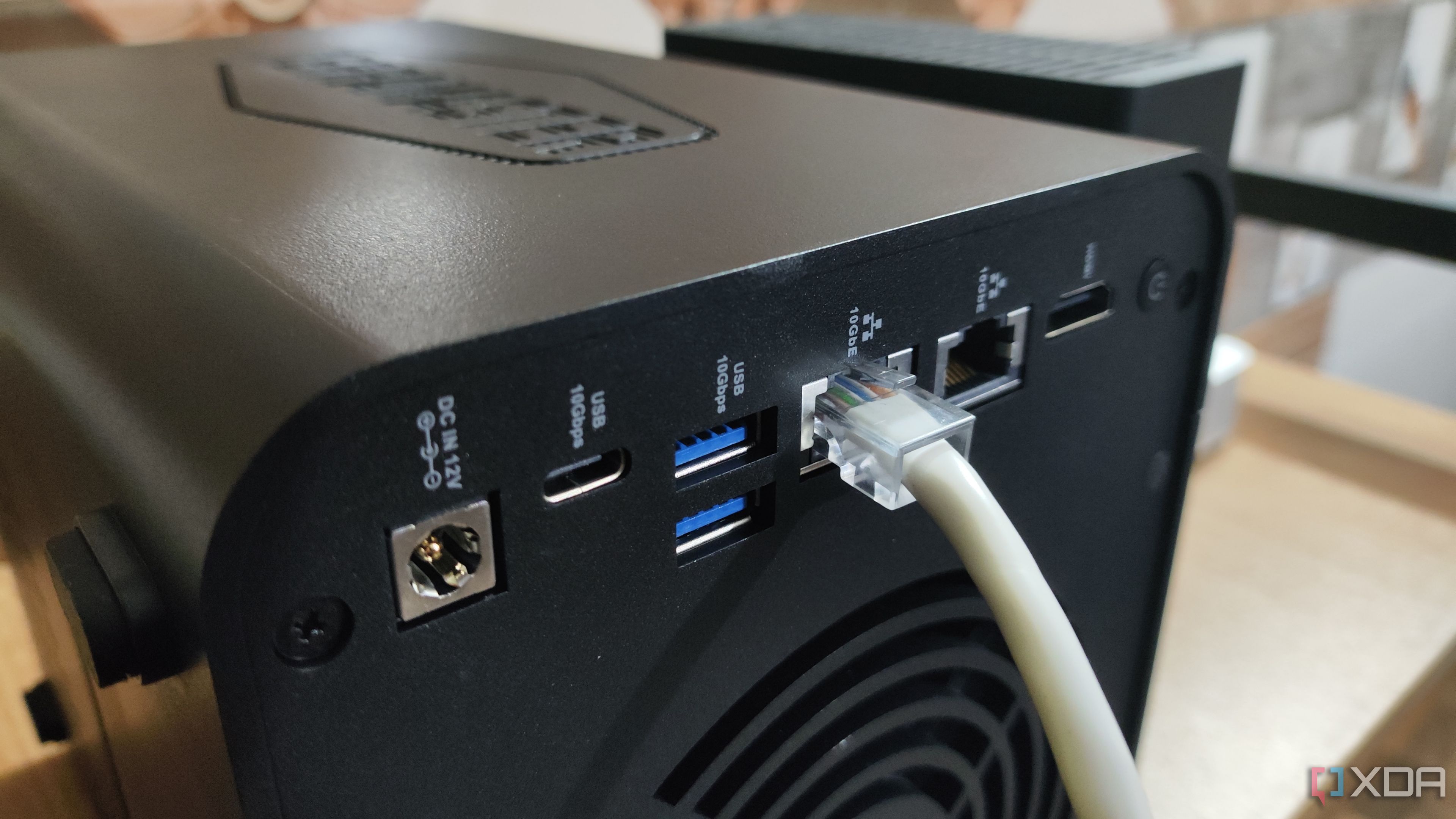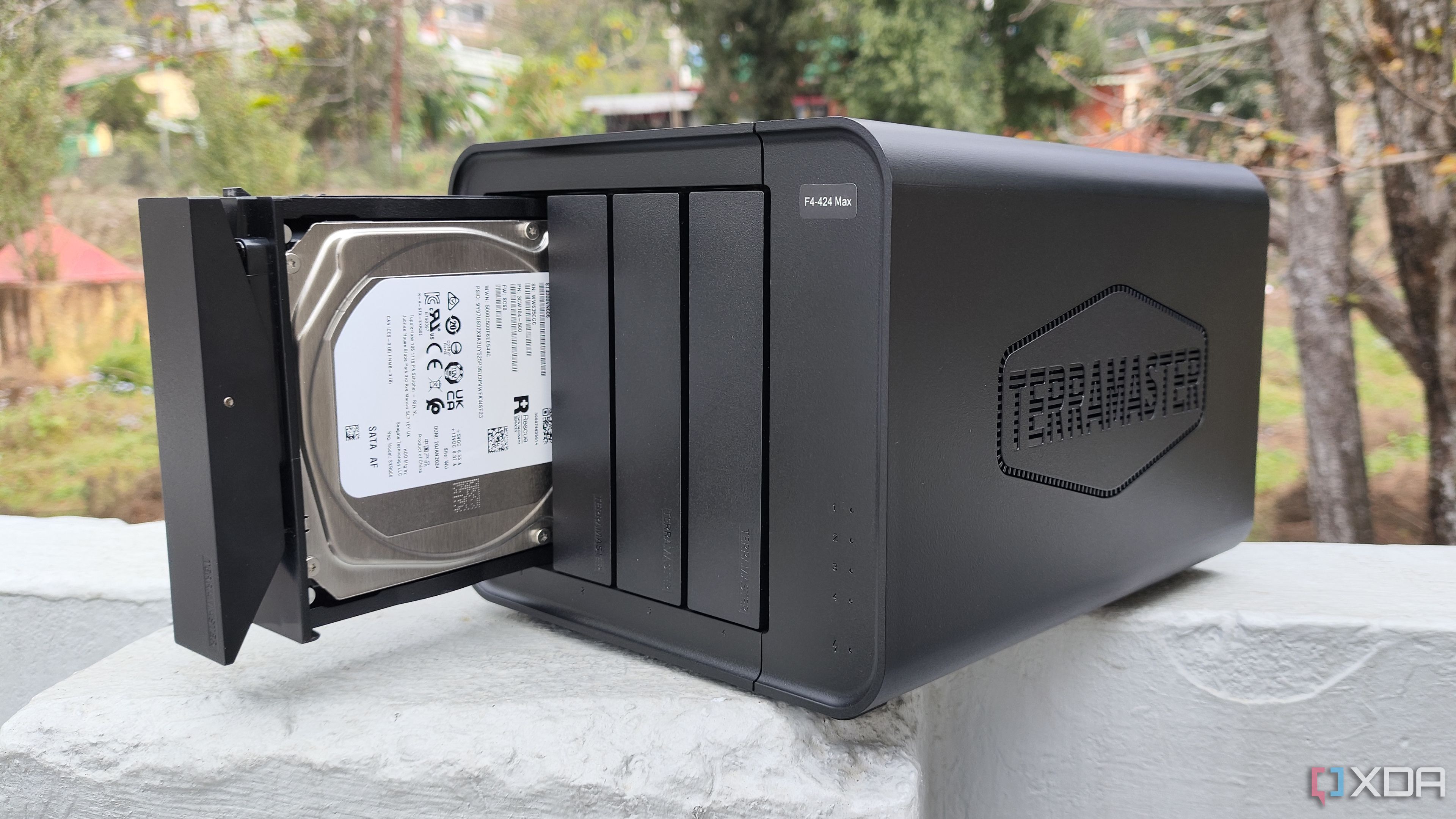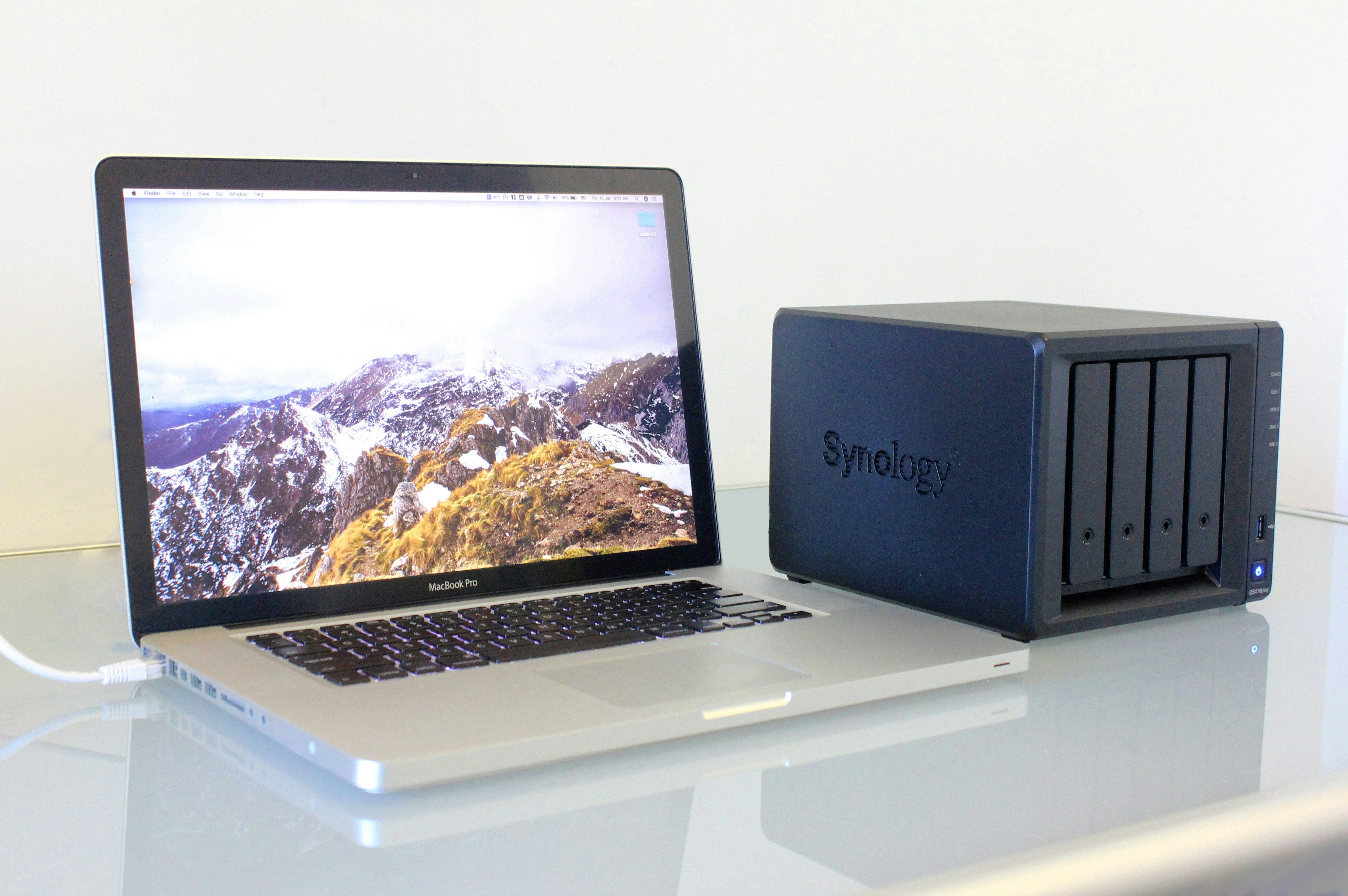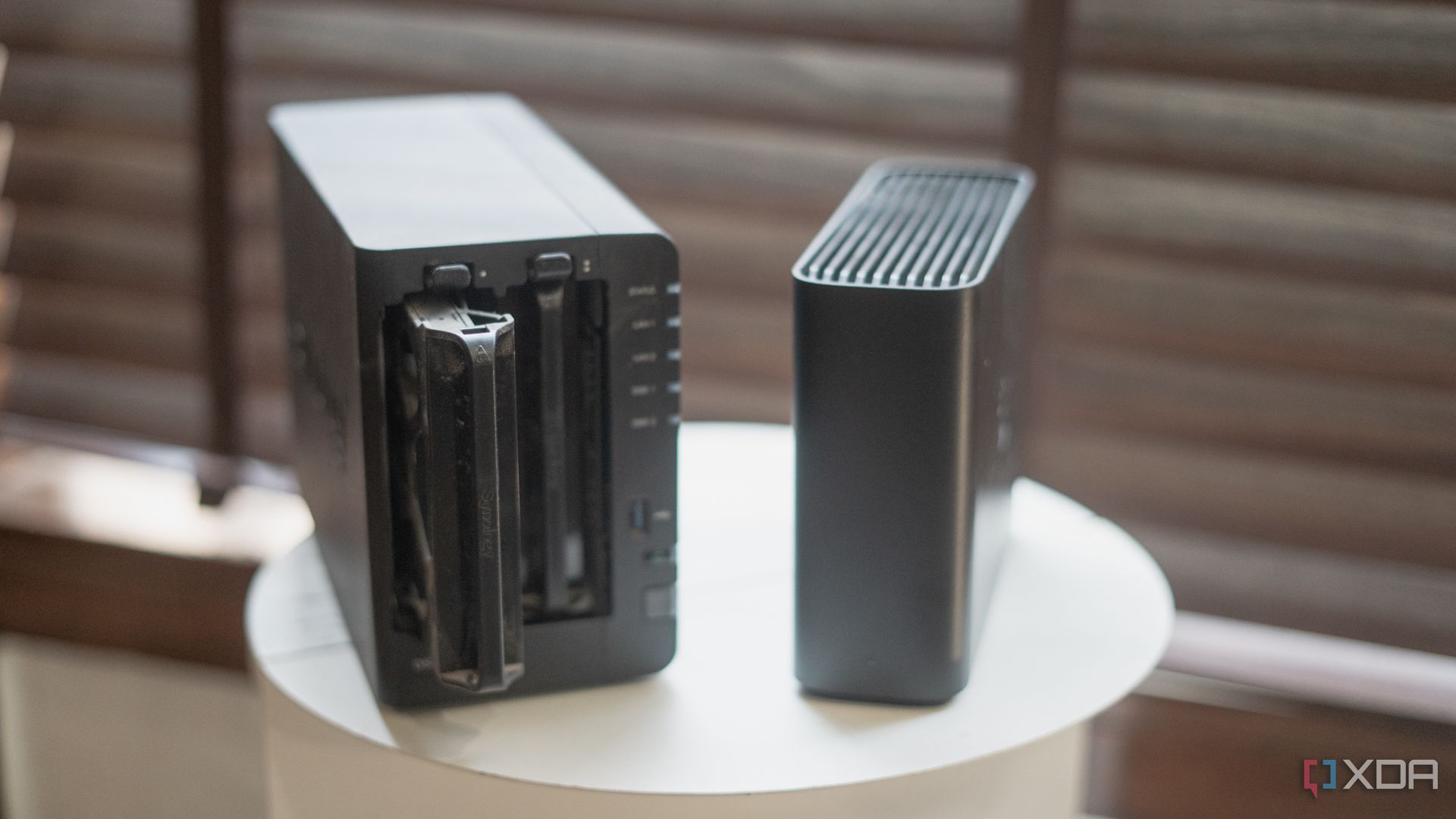There are quite a few ways your typical home NAS differs from its enterprise counterpart, most of which have to do with how the NAS holds, processes, and distributes data. Unlike home users, businesses face far more advanced and taxing needs — managing multiple users, applications, and environments. To handle all this complexity, it is crucial for businesses to leverage all the tools at their disposal to maximize the potential of their NAS while ensuring quick accessibility, data safety, and readiness for any data crisis.
Here are some NAS features that businesses shouldn’t ignore going forward in 2025 and should ask their IT administrators to set up immediately.
6
Cloud integration
Hybrid workflows are the way to go
Source: mockup.photos
Most NAS makers allow you to directly sync your files stored on the NAS with online services like Google Drive and Microsoft OneDrive. You can automate the backup of a portion of your files (such as only the important ones) or even the entire NAS using these tools. This ensures your files are seamlessly available and up-to-date across all platforms that your employees already have integrated into their workflow.
Having an off-site backup in the cloud also prepares you for unfortunate events like drive failures or disasters. Your files remain safe even if the NAS is damaged or faces a ransomware attack, ensuring minimal downtime and easy data recovery. Additionally, you can set up this hybrid system to keep frequently accessed files offline while others remain online, offering cost and time savings with adequate utilization of resources.
5
High-speed connectivity
Who doesn’t like faster file transfers?
Fast transfer speeds become essential rather than an optional upgrade when tens or even hundreds of people access the NAS simultaneously. This needs to be decided early in your journey — ideally before purchasing a new NAS. While many NAS makers are still cutting corners by offering only 1GbE ports (not even 2.5GbE), you should prioritize getting a model that supports 10GbE connectivity or at least has an upgrade option to enable faster throughput later on.
In case you’re not looking to upgrade your NAS in the near future, you can set up link aggregation on your existing device. While it won’t double the transfer speed for a single transfer stream, it increases overall bandwidth, speeding things up significantly for everyone on the network. Better load balancing also minimizes network bottlenecks by spreading out the load, ensuring smoother operations and improved productivity.
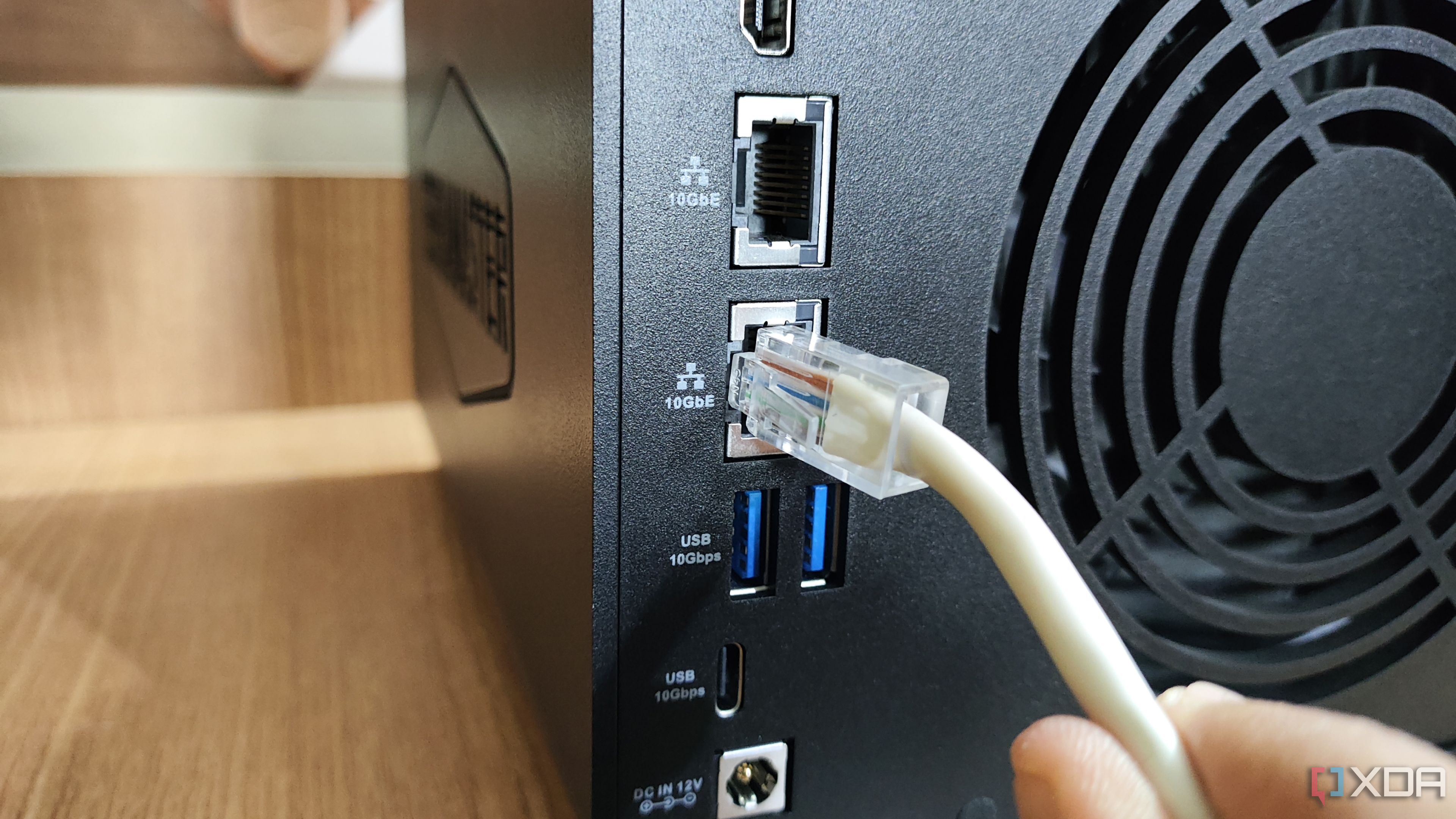
Related
5 reasons you should use link aggregation on your NAS
Both home users and businesses can benefit from it
4
Automated backup scheduling
So obvious, yet often overlooked
If you’re still relying on manual backups, you’re exposing your NAS and the data in it to unnecessary risks — not to mention the gap between the last backup and a potential attack that could result in complete loss of data for that period. Depending on how frequently your data changes and its importance, you can configure the NAS to perform automatic backups hourly, daily, or weekly. Hourly backups are ideal for keeping critical files up to date everywhere, while daily or weekly backups are sufficient for less vital data.
A good thing is that you can granularly configure this to create custom schedules for different data types on the same NAS. As mentioned earlier, you should set up these automated backups to save copies of your data to an off-site location, saving you from events where your main NAS is compromised or damaged. In addition to that, incremental backups are particularly useful as they don’t overload the network during the backup process, keeping things efficient.
3
Advanced file versioning
A well-thought-out retention policy goes a long way
Source: Unsplash
Your IT manager can implement a company-wide file versioning and retention policy applicable to all data that you generate or process. For instance, saving up to 20 historical file versions updated in real-time enables you to track changes and revert to a previous state if a file gets corrupted or unwanted edits are made. Additionally, holding a client’s files for a defined period after contract termination may be a regulatory requirement, which this feature helps fulfill.
While keeping historical records of your data is important, it’s even more crucial to minimize the recovery time following any disruption. You should ideally aim for a net-zero recovery time objective (RTO), but any reduction in downtime is welcome. In the event of data loss, you can quickly restore important files to get back on track while other files are recovered in the background. Robust file retention paired with easy and quick recovery ensures your office NAS remains useful in every situation.
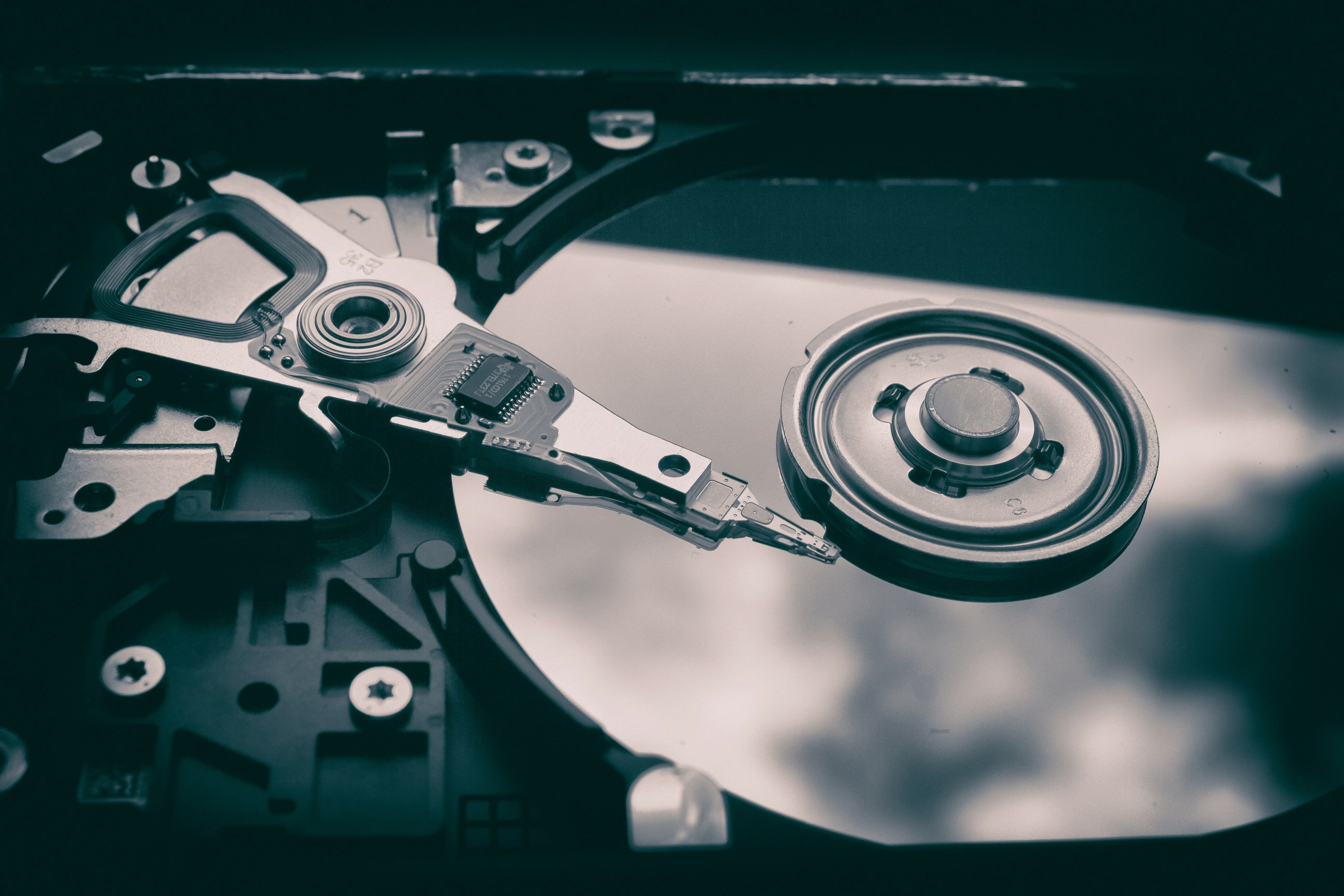
Related
What is data restoration, and how does it work?
Not all deleted data is truly gone, and data restoration can pull it back off your hard drive or SSD in some situations
Put AI to some good use in 2025
Gone are the days when you needed to remember exact names and use specific keywords to find your files. Modern NAS systems leverage AI capabilities, including natural language processing (NLP), that will allow users to search for files using simple queries in everyday language. This not only enhances the user experience but also boosts productivity with predictive capabilities that anticipate the files you might need at a particular time.
Many NAS brands are already implementing such features and are also using AI to automatically tag and classify files, just like Google Photos groups images by face all by itself. This allows your NAS to bundle your frequently accessed files into dedicated folders or display them prominently in the file manager. These smart features simplify routine tasks, making your team more efficient. However, running these AI features may require newer hardware unless NAS makers decide to bring them to their existing models.
1
Multi-layered ransomware prevention
You have to be prepared for the worst
Targeted ransomware attacks on servers will only get more sophisticated in the future. The best defense against them is a multi-layered approach to minimize the risk of an attack in the first place and reduce damage if an attack occurs. A good measure is to limit your NAS’s external exposure. If that’s not feasible, consider setting up multiple NAS units, with some disconnected from the internet to house critical business data securely.
Attackers often exploit unpatched vulnerabilities. To prevent that, regularly update your NAS firmware and ensure that employee devices accessing the NAS have updated client software. Installing anti-ransomware tools adds another layer of protection. Finally, you should enforce granular user permissions with user groups to restrict access to sensitive data only to authorized employees, ensuring that even if one profile is compromised accidentally, the damage is limited.
2025 is the year to prioritize data safety
Businesses walk a tightrope with their data. Their NAS units are almost always under heavy load, and yet they must stay reliably fast without disruptions. On top of that, businesses constantly need to keep an eye out for possible threats that could compromise data integrity. That’s a lot to expect from your office storage setup, yet none of this can be avoided. But with basic housekeeping and by implementing these advanced measures, you can keep your NAS running smoothly and your data safe.

